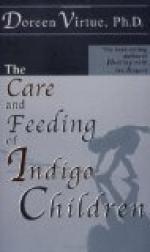If the child is two or more years old, the only effective means of weaning from the bottle is through hunger. The bottle should be taken away at once and entirely, and nothing allowed except milk from a cup until the child takes this willingly. Sometimes a child will go an entire day without food, occasionally as long as two days, but one should not be alarmed on this account and yield. This is a matter of the child’s will and not of his digestion, and when once he has been conquered it is seldom that any further trouble is experienced. As soon as a child has learned to drink his milk from a cup, cereals and other solid foods may gradually be added to the diet. The educational value of such training is not the least important consideration.
Can a baby just weaned take cow’s milk of the same proportions as one of the same age who has had cow’s milk from birth?
Very rarely; to give a baby who has had nothing but the breast from birth, plain cow’s milk, or even that milk which a bottle-fed baby of the same age might take, is almost certain to cause indigestion. The change in the food is quite a marked one, and should be made gradually by beginning with a very weak milk and increasing its strength as the baby becomes accustomed to take cow’s milk.
What would be the proper proportions for an infant weaned at four or five months?
About the same as for a healthy bottle-fed infant of two months; the quantity of course should be larger. The food can in most cases be gradually increased so that in two or three weeks the usual strength for the age can be taken.
What would be the proper proportions for an infant weaned at nine or ten months?
About the same as for a bottle-fed infant at four or five months, to be increased as indicated above.
Will not a child lose in weight when placed upon so low a diet?
Very often it will do so for the first week or two, but after that will gain quite regularly; the acute indigestion, however, which generally accompanies the use of stronger milk will, in most cases, cause a greater loss.
ARTIFICIAL FEEDING
What foods contain all the elements present in mother’s milk?
The milk of other animals,—cow’s milk being the only one which is available for general use.
Is it not possible for infants to thrive upon other foods than those containing fresh milk?
They may do so for a time, but never permanently. The long-continued use of other foods as the sole diet is attended with great risk.
What are the dangers of such foods?
Frequently scurvy is produced (see page 141), often rickets, and in other cases simply a condition of general malnutrition,—the child does not thrive, is pale, and its muscles are soft and flabby.




